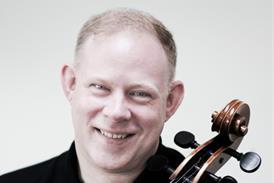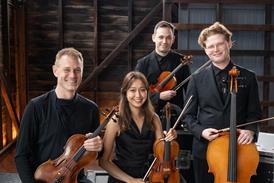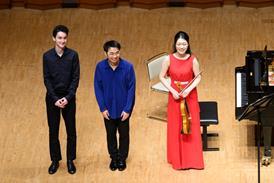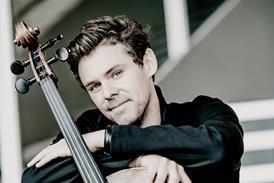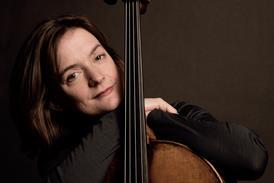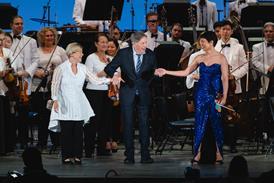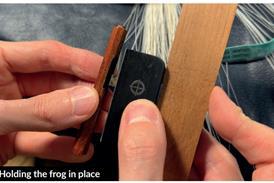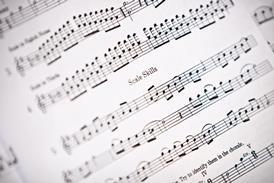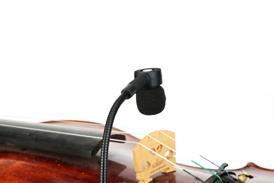Lutherie – Page 15
-
 Premium ❘ Feature
Premium ❘ FeatureTrade Secrets: Gluing the C-bouts using a Cremonese mould
An alternative method for this part of the process, which may be more authentic than the standard procedure
-
 Premium ❘ Feature
Premium ❘ FeatureStraight lines within the arches of Stradivaris and Guarneris - Making Matters: Straight talking
Andrew Ryan investigates the presence of regular straight lines within the arches of the top and back in the instruments of Stradivari and Guarneri ‘del Gesù’
-
 Premium ❘ Feature
Premium ❘ FeatureInternational lutherie schools: All round learning
Peter Somerford speaks to teachers from seven violin making schools to find out the options for young aspiring luthiers
-
 Premium ❘ Feature
Premium ❘ Feature‘The building was a lampshade factory and still retains its industrial character’ - My Space: Mechthild Ossenbrunner
The luthier takes us on a tour of her and her husband’s Cologne workshop
-
 Premium ❘ Feature
Premium ❘ FeatureIn Focus: A 1932 tenor viola by Jacint Pinto
Jordi Pinto examines an unusual tenor viola made by his own great-uncle, Jacint Pinto
-
 Premium ❘ Feature
Premium ❘ FeatureNewark School of Violin Making: Fifty years young
The Strad looks back on 50 years of the UK’s best-known institution for lutherie and the many well-known names who have passed through its doors as students
-
 Premium ❘ Feature
Premium ❘ FeatureThe hidden treasures of Pietro Guarneri of Mantua
Pietro Guarneri of Mantua was an undisputed master luthier, even though very few examples of his work remain. Andrea Zanrè examines three ‘violettas’ that until now have been overlooked
-
 Premium ❘ Article
Premium ❘ Article‘Centuries ago, Stradivari had no idea ivory would be subject to legal issues’: Letters to the editor September 2022
A selection of letters The Strad receives each month from its readers around the world: September 2022 issue
-
 Premium ❘ Feature
Premium ❘ FeatureTrade Secrets: Making a Baroque cello bridge
A method that allows the luthier to create their own design rather than rely on a pre-cut template
-
 Premium ❘ Feature
Premium ❘ FeatureMaking Matters: How six bow makers crafted a bow in three days
Making a bow in three days is a tall order for anyone – but for six bow makers together? Pierre Nehr explains how April’s ‘Bow Rush’ event in Paris became an educational experience for all concerned
-
 Premium ❘ Feature
Premium ❘ FeatureMy Space: Martin Krause
The luthier, based in Saarbrücken, Germany, invites us into his workshop
-
 Premium ❘ Feature
Premium ❘ Feature‘Interventions led to an almost total removal or retouching of the original materials’ - Comparing three 1734 Guarneris
Giacomo Fiocco explains the technical methods used to analyse a trio of 1734 Guarneris
-
 Premium ❘ Feature
Premium ❘ FeatureRevealing Sartory's secrets: A look at one of the 20th century's finest bow makers
Often called the finest bow maker of the 20th century, Eugène Sartory was a fastidious artisan whose work shows efficiency and reliability. Richard Morency examines a bow from Sartory’s middle period to reveal his working methods
-
 Premium ❘ Feature
Premium ❘ FeatureIn Focus: A 1766 cello by Carlo Ferdinando Landolfi
Philip Brown looks at the Milanese maker’s mid-century instrument
-
 Premium ❘ Feature
Premium ❘ FeatureIn Focus: An 1875 viola by Domenico Degani
Ernst Fuchs details an instrument by the accomplished maker, now best-known as the father of Eugenio Degani
-
 Premium ❘ Feature
Premium ❘ FeatureFrançois-Nicolas Voirin: The Second Tourte
The bows of François-Nicolas Voirin had more influence than those of any other bow maker after F.X. Tourte. In the first of two articles, Matt Wehling explores Voirin’s life and career, and examines why his bows were so successful with players
-
 Premium ❘ Feature
Premium ❘ FeatureIn Focus: A 1762 violin by Gennaro Gagliano
Yuri Pochekin examines the Neopolitan maker’s 18th-century instrument
-
 Premium ❘ Feature
Premium ❘ FeatureIn Focus: A c.1680 double bass by Girolamo Amati II
René Zaal details an instrument by the son of the more well-known Nicolò Amati, and the grandson of his namesake Girolamo Amati I
-
 Premium ❘ Feature
Premium ❘ FeatureMy Space: Elisa Scrollavezza & Andrea Zanrè
The Parma-based makers take us on a tour of their workplace
-
 Premium ❘ Feature
Premium ❘ FeatureMaking Matters: Set the records straight
Acoustic testing can generate a huge amount of data on a single instrument. Rainer Beilharz shows how to record it in a meaningful way for visually oriented people


